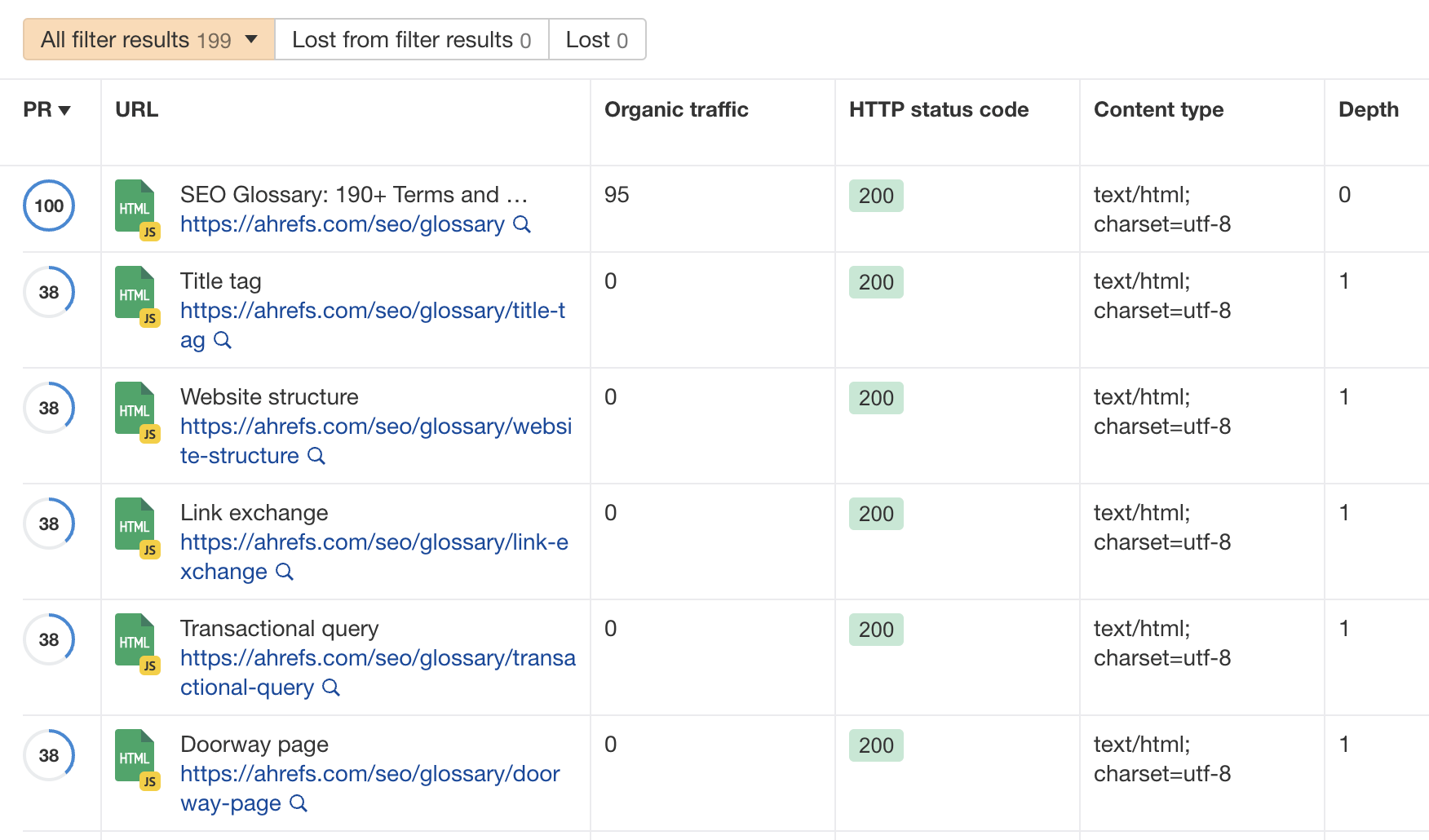HTTP 200 Response Code
What is a 200 Status Code?
The HTTP 200 OK is the status response code from a server for successful HTTP requests from a client (browser). For a web page, it indicates that its HTML code can be loaded successfully.
Web browsers use HTTP requests to communicate with servers. These requests consist of:
- A specific URL to locate the target server and resource.
- The request method (GET, POST, etc.).
- Additional information such as URL parameters or client-side cookies.
For instance, when you accessed this page, your browser made a GET request to https://ahrefs.com/seo/glossary/http-200 URL, to which the server responded 200 OK.
Why is the 200 status code important?
The 200 response code is important for your website because it means that users can access your pages without any trouble.
Additionally, the 200 response code indicates that search engine crawlers can access your pages and links on them. Thus, your pages can be indexed and pass the PageRank to the linked pages.
So ideally, you’d want your server to respond with 200 OK status for the maximum number of pages on your website. However, there can be some exceptions.
SEO best practices for HTTP status codes
As mentioned earlier, your server may not respond with an HTTP 200 OK status for all the requests. For instance, if you’ve redirected or removed some pages, the server will return a 301(302) or 404(410) status code. And that should be okay.
But sometimes, there can be issues with your web pages beyond your awareness, and the server might be responding with error status codes. Now, if these are the important pages that should have a 200 response code instead, you need to fix the errors.
So we recommend conducting a periodic site audit with Ahrefs’ Free Webmaster Tools. It’ll crawl all the pages on your site and show the server response code for each page.

Then you can analyze the pages that return HTTP status codes different from 200 OK. Also, not every page that returns a response code other than 200 requires your attention.
But here are some cases you must address:
1. Excessive redirects
It’s okay to have legitimate redirects on your site in cases like moving a page permanently, site migration, etc. But having unnecessary redirects is a bad SEO practice. It can slow down the loading speed of your webpages.
So use redirects wisely. For instance, instead of linking to a page that is 301 redirected to another URL, link to the destination page directly. This will reduce the page loading time.
2. Redirect chains
A redirect chain is a series of two or more redirects between the requested URL and the destination URL.

Although Googlebot can follow up to 10 redirect hops, we recommend you avoid using long redirect chains. Redirect chains can slow down the page speed, which leads to a negative user experience.
So consider auditing your website with our Site Audit tool (Ahrefs Webmaster Tools) to identify the redirect chain issues and correct them.
3. Broken pages
While it’s normal to have broken pages (404 or 410) on your site, you should analyze these pages to see if they deserve to be converted to 200 OK pages.
For example, you have a few broken 404 pages on your site that have high-quality backlinks. Here, the valuable PageRank is being wasted.
In such cases, you can redirect these pages to similar, relevant pages on your website. This will restore the PageRank flow from the broken pages to other important pages.
You can identify broken pages easily with Aherfs Webmasters Tools.